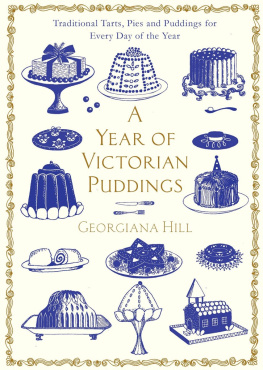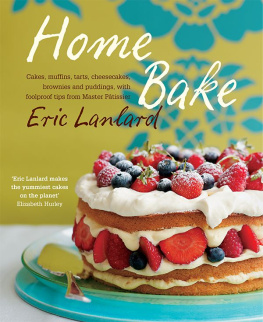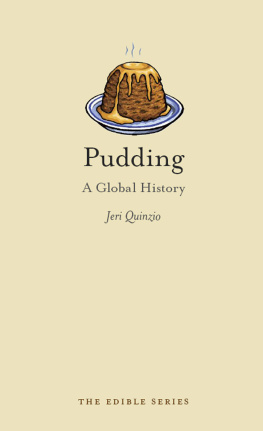
CONTENTS

INTRODUCTION.

You appear very partial to apple puddings, I observed to an elderly lady, with whose family I had been staying during the greater part of a dull November, and had been surprised to find that I had been uninterruptedly regaled upon the dish in question for the whole time of my visit.
Partial to apple puddings? she replied, drearily, no, indeed, I am not; but of all the troubles in life entailed by housekeeping, that of having daily to appoint the pies or puddings proper for the season is the worst; so, after mature reflection, I determined rather than to attempt evading the annoyance by seeking refuge in a boarding-house, or taking to travelling, to adopt the easier expedient of insisting upon my cooks confining herself entirely to providing me with apple puddings for one half the year, and gooseberry puddings for the other half: so if I can persuade you to remain with us till May, you can then count upon a change; but in the interim you may expect nothing but the appearance of these inevitable apple puddings, and from Whitsuntide to the feast of the Assumption, as reasonably rely upon their being replaced by puddings of gooseberry. I cannot say I quite approve of the arrangement now I have tried it, but at all events, she added, looking ruefully at the insipid preparation of pastry before her, I believe I am getting reconciled to it by degrees, for only think the world of altercation, anxiety, and contrivance it has exempted me from!
This slight incident decided me to undertake a work for the assistance and enlightenment of any ladies who may be in like distress; and if through my editorial exertions, one of the fair or even sterner sex be spared a moments trouble upon the subject (for creations lords do dabble in dinners somewhat), or one superfluous pudding, whether of apple or of gooseberry, be spared society, I shall not only, as common cant would say, consider myself amply rewarded, but feel I am incontestably entitled to be looked upon as a benefactor of my species. And with all the sincerity of an epicure, I hope that, with this manual to consult, no one will be any longer at a loss what to order or what to have.
Besides puddings, tarts, and pies, I have introduced custards, not that they can be considered as coming under the category of pastry, but on account of their being essential additions to many kinds of tarts and fruit-puddings, and likewise form an agreeable variety upon the dinner-table.
Fritters, omelettes, and other entremets, I have also given, because they are quickly made, and I know from experience that nothing is more difficult than for a housekeeper to make choice of an easily-prepared dish of pastry upon occasions of emergency, when suddenly called upon to produce a dinner for unexpected visitors.
I may add that in compiling this work it has not been my aim to make a mere collection of all the puddings ever known; there are many very worthy compositions, such as pies of parsley, tarts of cabbage, puddings of leeks, and others of that sort that I have purposely omitted, feeling convinced that although these dishes were locally esteemed, they would be scarcely likely to meet with popular acceptance.
Where I have named any particular pudding twice, it will be seen that there exists an important difference, not only in the manner of making it, but in the mode of its being cookedin the one case boiling, and in the other case baking being necessary; and although many of the fresh fruit-tarts and puddings I have mentioned are almost similarly prepared, I have preferred treating each in its appointed place rather than subject my readers to the annoyance of seeking for a dish and only finding it included under a general heading, and even then, perhaps, being referred to another chapter for further instructions respecting it.
The quantities of the ingredients in the several compositions here given will be found to be proportioned to the requirements of a small family; and though at first sight some of the dishes may not be thought to be of a recherch description, yet the majority of them is highly so; and while the humblest of the preparations presented in these pages will, upon trial, be found to have merited their well-established reputations for homely excellence, the more elegant amongst them also possess the one great recommendation of being within the reach of Amphitryons and housekeepers of the most moderate means.
B ROWNING H ILL ,
January, 1862.
JANUARY.

T HE return of January invariably appears to bring with it the ratification of all the bright hopes of enjoyment which arose in our hearts at the approach of Christmas: in January, above any other period of the year, the interchange of hospitality between friends takes place, and if any difficulty is experienced as to the provisions to be made for the entertainment of our guests, as far as pastry is concerned, it proceeds from the embarrassment occasioned by the extensive variety of the good things at our command, rather than from any existing paucity of materials; for notwithstanding it is midwinter-time, and fresh fruits of home production are comparatively scarce, yet pears, apples, and medlars can still be procured, and these, too, in tolerable flavour and condition, while lemons, oranges, nuts, almonds, etc., are in abundance; and, besides the tempting displays of raisins, currants, candied-peels, and spices offered to our notice by the importers of foreign fruits, the shelves of all good housekeepers should still be stored with a fair share of preserves of different descriptions, which, with the numerous farinaceous substances, such as sago, tapioca, rice, and others that are always readily obtained, our resources of festivity will be found to be most ample. Certainly it is not a favourable time for milk, cream, and butterand eggs are as yet far from plentiful; but then beef-suet and sweet hogs-lard are in the height of their perfection, and with these essential adjuncts, and good flour at our disposal, the production of admirable pastry may be assured, providing always that proper care is bestowed upon the manner in which these ingredients be employed: and here I must remark that a well-made crust, whether for tart, pie, or pudding, will make almost any preparation of pastry worthy of commendation; and if the directions given for crust-making be attentively adhered to, and your cook possess the indispensable qualifications of cleanliness and quickness, the success of your pastry may be pretty safely depended upon.
PLAIN SUET CRUST FOR BOILED PUDDINGS.
Eight ounces of chopped beef-suet, a small spoonful of salt, and twelve ounces of dry flour, mixed well together, and kneaded with a sufficiency of cold water, and rolled out to fit your basin as required, will be found enough for what is called a quart pudding. Suet crusts are generally preferred for boiled puddings and dumplings, as when lard or butter is used, the paste is apt to look dark coloured when dressed.
BUTTER CRUST FOR BOILED PUDDINGS.
Rather less butter or lard answers for a boiled crust, or it gets soft in the course of cooking, and is likely to allow the juices of the pudding to escape; six ounces of either lard or butter to ten ounces of flour will be sufficient. Add a little salt; rub the fat well into the flour, then put water enough to form a light but not a too moist paste. If, however, a greater degree of richness be desired, more fat may be employed, but two well-beaten eggs should then be added to give consistency to the crust. This kind of paste is principally used for convenience as a substitute for suet crust when suet is not to be had.
Next page











